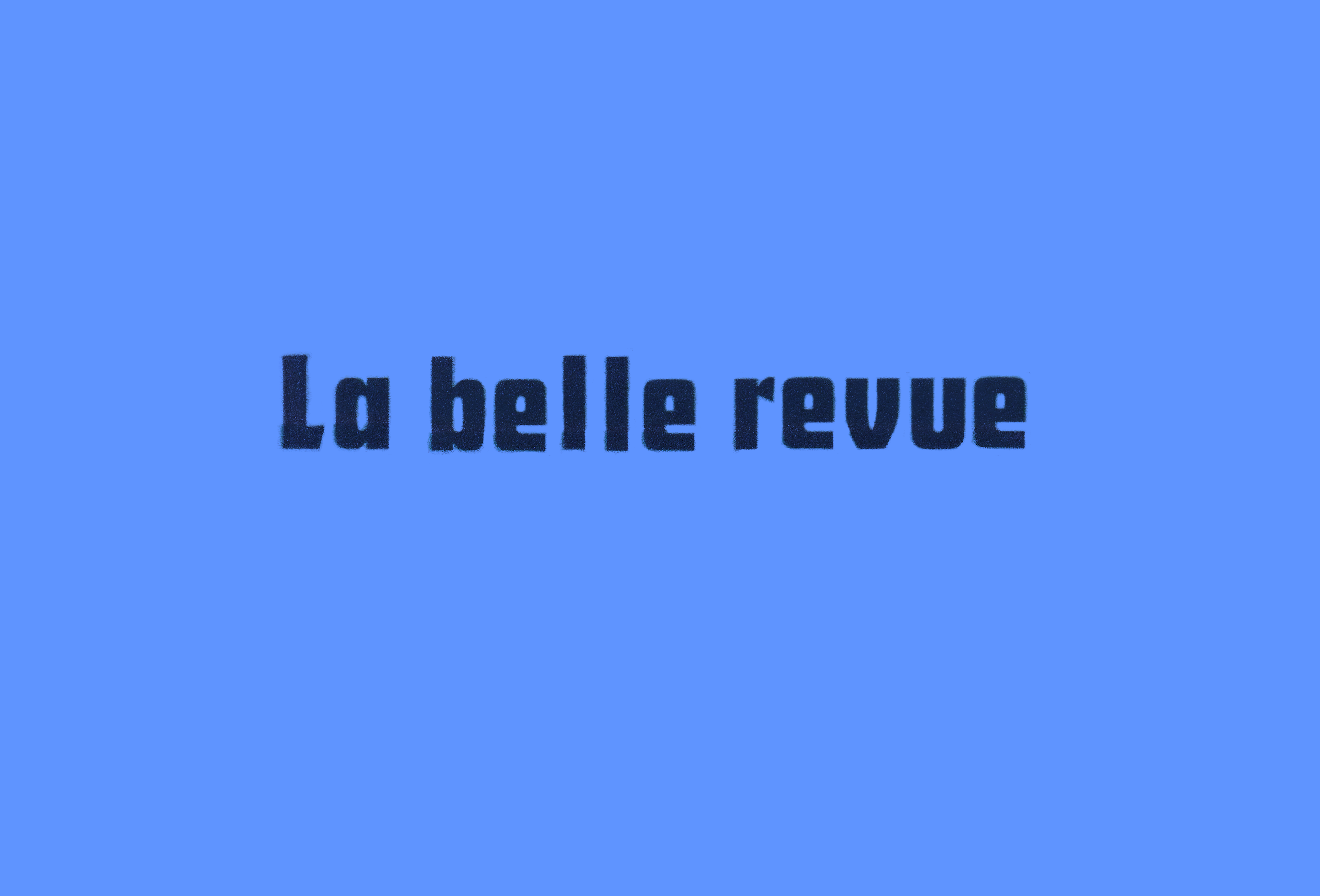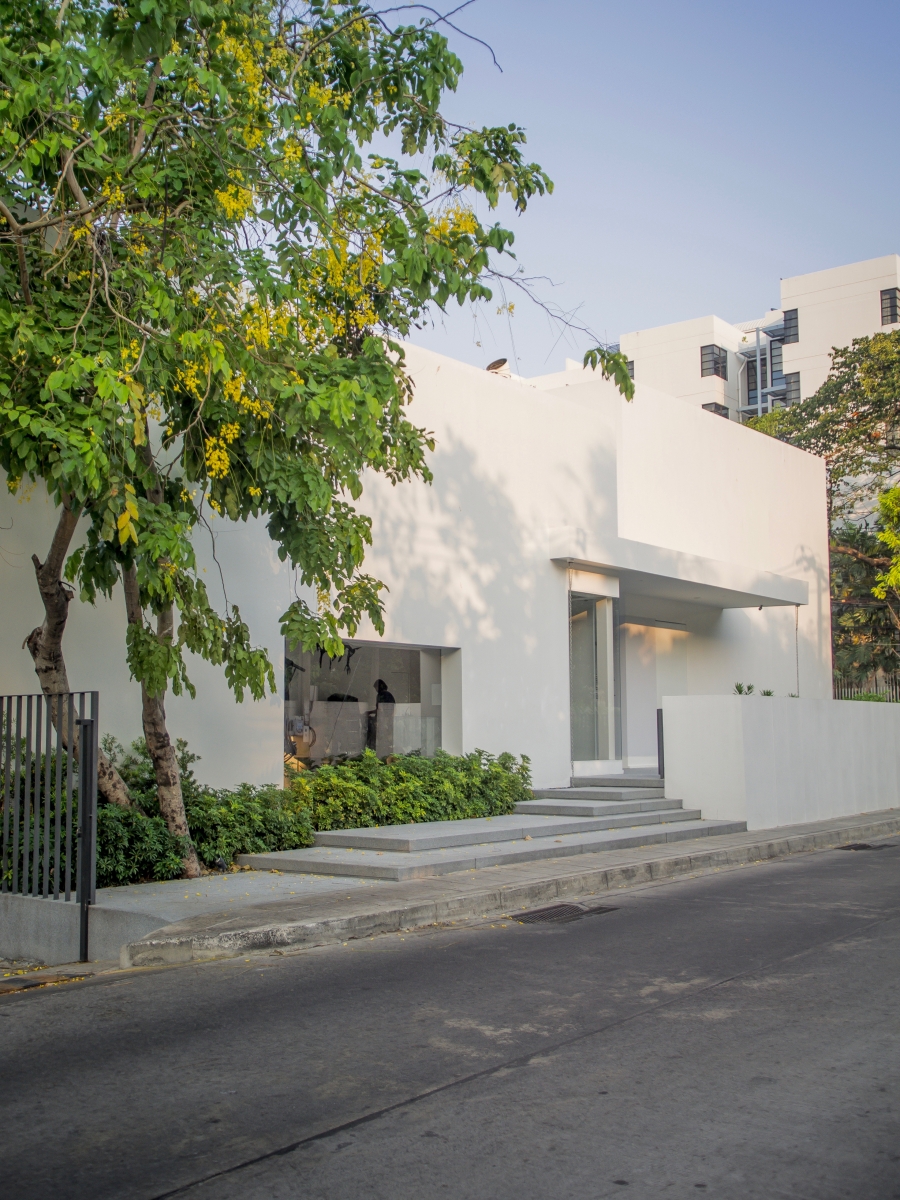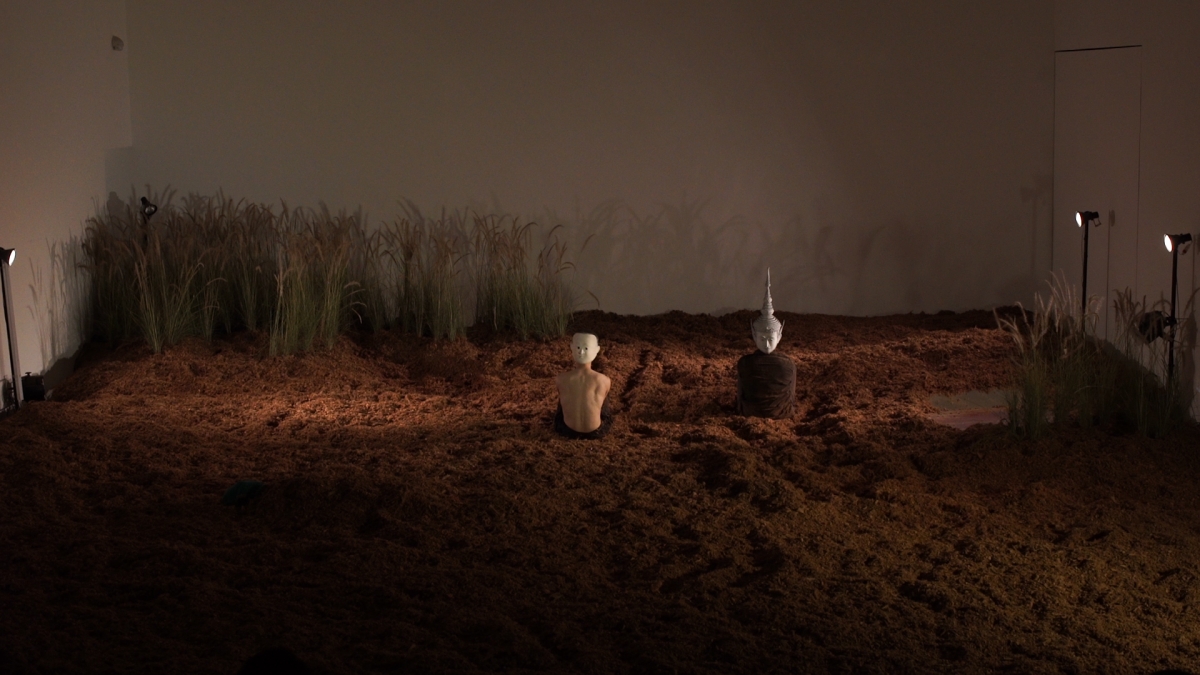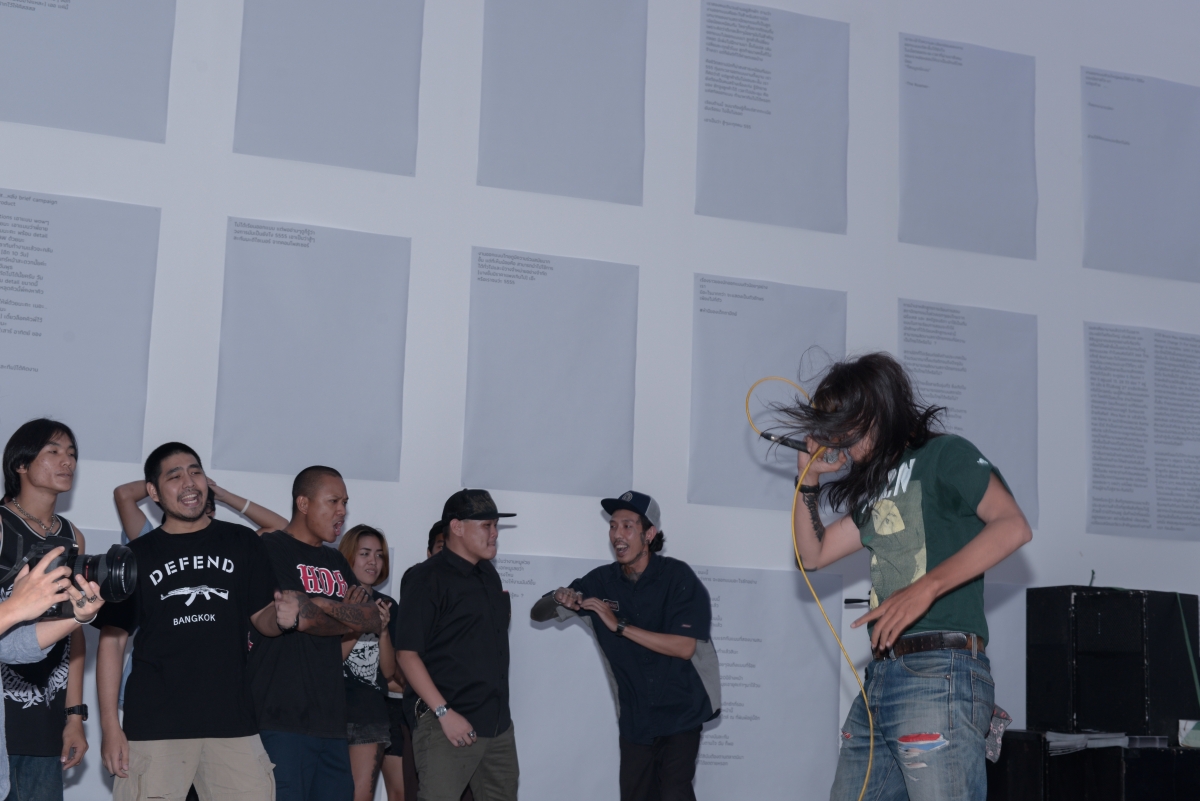La belle revue: Could you describe in what context Bangkokcitycity appeared and what are the backgrounds of each person involved ?
Supamas Phahulo: We seriously started exploring the idea of opening a gallery in 2012-2013, we had discussed the idea of running our own art space a while before that. During 2012-2013 in Bangkok, the political situation was very unstable and the economy was quite weak. What was interesting though was that during those times we saw an increased number of individuals working on there ‘passion’ projects, not only in the arts sector.
Before this we spent our lives quite ordinarily, I worked at a government organisation that dealt with the concept of Creative Economy. I learned ways of thinking from the new generation of entrepreneurs. On the weekend, being bored of going to department stores, I would spend my time in restaurants, going to the cinema, bookstores, and I would go to art galleries. Back then not many people were going to galleries yet. The galleries I often attended were either galleries that have been open for a long time, or new younger small galleries. Both locally and internationally oriented. I would usually gravitate towards the new generation of Thai artists or if not modern artists whose work I was unfamiliar with. During that time there was Bangkok Art and Culture Centre (BACC) that I frequented often, and H Gallery, Tootyung Gallery and 100 Tonson gallery mainly because it was close to where I lived. I would often attend art events, small auctions, film screenings and musical performances. While looking at all those propositions, we often thought : when will we see shows of the artists we like ?
Akapol Sudasna : Yes, like Supamas said, we were waiting to see shows from artists we admired, the way that we hoped to see it. We have waited for a couple of years and eventually we decided to be more proactive and worked on creating our own space to show artists we believed in. We did about 3 years of research, attending museums, galleries and art spaces in Europe, U.S., Asia and exploring the local scene, trying to figure out our own positioning. We had the chance to talk to many knowledgable people for perspective and advice. We decided to pursue what felt the most right for us. Bangkok is such a large and densely populated city ; other people would probably want to see these shows too !
We also wanted to grow gallery culture in Thailand, sort of like the way it is in other developed countries ; hoping for the masses to embrace contemporary art culture here too. Being the sole shareholders of the gallery, we could decide the business plan, budgets and overall experience when people come visit the space. Art shows when done well can be really inspiring, we know this from first hand experience as art goers and we wanted to transfer that energy to the community around us. We like working with artists and we appreciate many types of art. We needed a convenient place for people to experience all types of contemporary art that we thought was relevant. Bangkok seemed like the right place because it is our hometown and we are happy to do something for its community.
Growing up I was raised in Amsterdam, Toronto and Bangkok, my father worked at Thai Airways so we moved around quite a lot when I was younger. My mother would often take me to museums and teach me art history, mostly ancient to modern. The first time I saw contemporary art in a cafeteria during summer school in Massachusetts, I later found out it was a John Baldessari print. In college I was studying film in Los Angeles. I started visiting contemporary art spaces, there were certain galleries and museums which I really enjoyed there programming and would revisit every time the show changed. After moving back to Bangkok, I was briefly working in production and advertising and later gravitated towards working with independent and small companies including artists, musicians and alternative athletes.
La belle revue: How would you describe your specificity among other artspaces in Bangkok?
S: We see ourselves as a hybrid art space, probably because our backgrounds as co-founders, do not only come from fine art. When I was younger I worked at a music channel called Chanel [V] Thailand. I hung out with musicians and television producers for a long while. Later I hung out with designers because I was working at TCDC. And when it came to art, I would normally work with non-profit organisations, I never worked in a commercial gallery. So thats how the Bangkok CityCity Gallery art space came about. Our space is open to all types or different exhibitions formats. We put this into consideration ever since we started designing the architecture of the building. I remembered the good points that I learned from non-profit exhibitions and we tried to also learn new things which are beneficial aspect to a commercial art space. Since I used to work for the government, it helped me pay more attention in how to communicate to a mass audience. This combined with the idea that contemporary art should be able to communicate with a wider audience too. I am talking about communication, because art sales are obviously limited to initial investment.
A: Since we had the opportunity to build the gallery from the ground up, we were able to try to create the space as versatile as possible. Having a minimalist aesthetic for the space makes the works shown inside stand out more. We basically tried to build a versatile white cube that was open to the community or community friendly.
The idea of community is very important to us, we chose to collaborate with designers that shared a similar mind set, from designing the logo and branding, to architectural and landscape design. Even the name of the gallery was derived from a hook of a rap song, we share the same ideals of representing the city we are from and giving importance to the people in it, so it was a perfect fit, like a love song for the city. We wanted to attract a lot of different types of people to the gallery, to embrace art, new ways of thinking, share experiences and information through diverse programming. We were hoping for some sort of cross pollination in the community. Another important aspect of the gallery is communication and education : people in Bangkok are starting to use contemporary art more and more. We want to make sure we can communicate to new art goers as well as international visitors. We also stand for quality, we have a certain standard regarding what art experience should be in our gallery.
S: Akapol thinks it stands for community and quality, to what I would like to add the word diversity. I like diversity, also various ways of thinking and expression. How to respect and understand one another’s viewpoints.
La belle revue: Why, according to the situation of Bangkok artscene, did you decide to get involved in that space? Did you feel your scene needed an artspace like this?
S: It has more to do with where we were at at this moment. I think it is more important to discuss how the art scene was when we decided to open a space. But of course we saw an empty area in the art scene that we thought we could fill while being able to have fun when doing it. We also believe that there are more people out there that feel the same way we do.
A: We wanted our own business and wanted to work with people that we believed in. We also wanted to share with other people in the city.
La belle revue: Indeed, how, in your opinion was the art scene when you've decided to open your space? Do you see any change ever since?
Supamas: Nowadays I feel the art scene is a lot more vibrant than before, it might be because information circulates much faster in today’s times. That doesn’t mean the art scene was in a slumber throughout before. When I just graduated from university, there were new art spaces popping up as well as many emerging artists. But as time past, many of these places closed down, leaving only a few active galleries that I was interested in. As the art spaces dwindled, there was not enough places to show works, there were less exhibitions. The few government-run art spaces in Thailand have a certain process on selecting artists as well, which would normally give priority to more senior or established artists. During that time, there were emerging artists like Korakrit Arunanondchai who were known in the international contemporary art scene. This became a topic in the Thai contemporary community. It sparked discussions about possible future directions that Contemporary art in Thailand could take.
A: We saw a missing component, there were limited spaces for emerging to mid-career artists to exhibit in Bangkok. We believe that contemporary art has changed, it encompasses a lot of different types of mediums, so we decided to build a structure from the ground up to facilitates these needs instead of renovating a preexisting building. The most notable visible change we have seen is a substantial increase in attendance at a gallery. We have held 8 solo exhibitions so far, in a couple of these exhibitions we get an attendance of up to 12 000 people. Our exhibitions run 6-8 weeks, and we are open 5 days a week. The attendees are a diverse mix from a wide demographic range. The diverse programming helped open up the space to many types of people, we always hoped for it to be this way. Also if people enjoyed the experience at the galley, they often tell other people about it.
La belle revue: Going through your exhibition program, you seem to be rather centered on exhibiting Thai artists. As you seem to be also internationaly oriented, are you willing to mix your programmation with foreign artists? Could it be a way for you to promote Thai contemporay art abroad, as, except for perhaps five internationally known artists, we don't know much about Thai art in France for instance?
S: Most Thai people don’t know about contemporary art from other countries or even Thai contemporary art. Art viewing culture and spending time at a museum or gallery is still a new activity that is slowly growing here. The way we set up our exhibition programming is not limited to nationality. It is designed so we can learn and grow together, in terms of the art itself and the viewers understanding the content and its value. The viewers are not only Thai, but many international visitors also. Thailand still encounters problems in communicating to a mass international audience.
La belle revue: Do you try to get fund by the state or city culture department? How does it work in Thailand? Are you rather organised on private funds?
A: The gallery is currently run as a commercial gallery business structure. The gallery is currently privately funded by the 2 owners, us. This business model has been working so far. We plan on getting funds from state or city culture department on some projects which we think are appropriate this year 2017. Once a year, we have a one-month long not for profit art exhibition. There are some events and short exhibitions coming up this year that we plan on asking the city culture department for additional support. Our gallery team is still quite small and we are working on this sector currently. I think the state and city culture department also need to see what previous works the company have accomplished for them to consider giving funding, I think the timing is good right about now.






